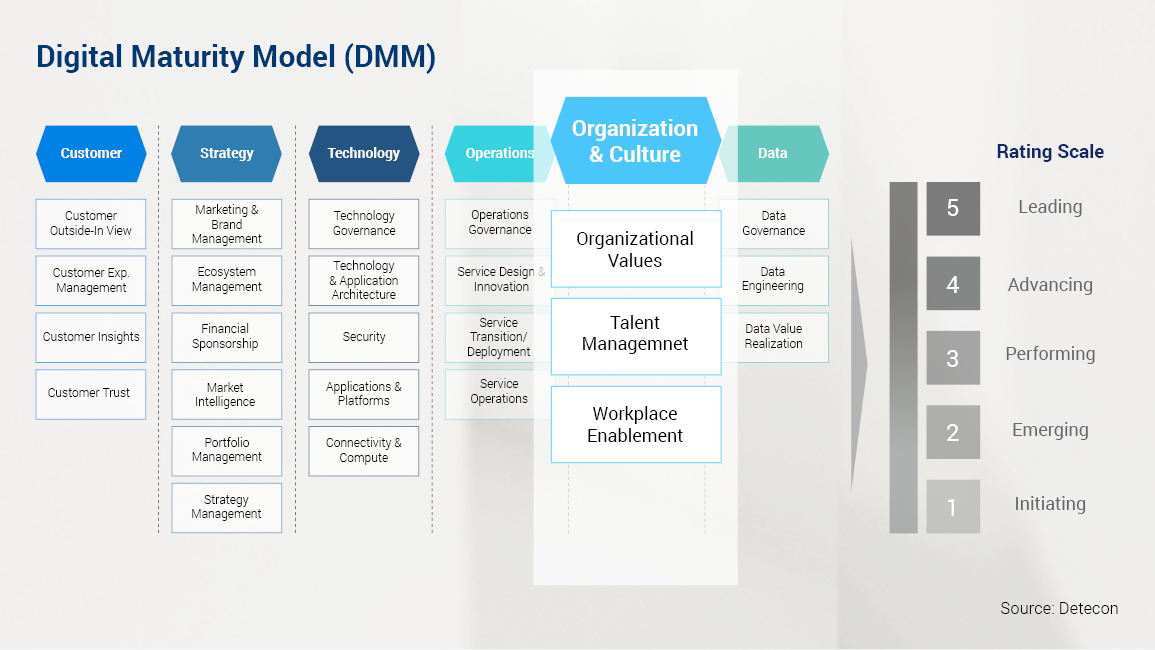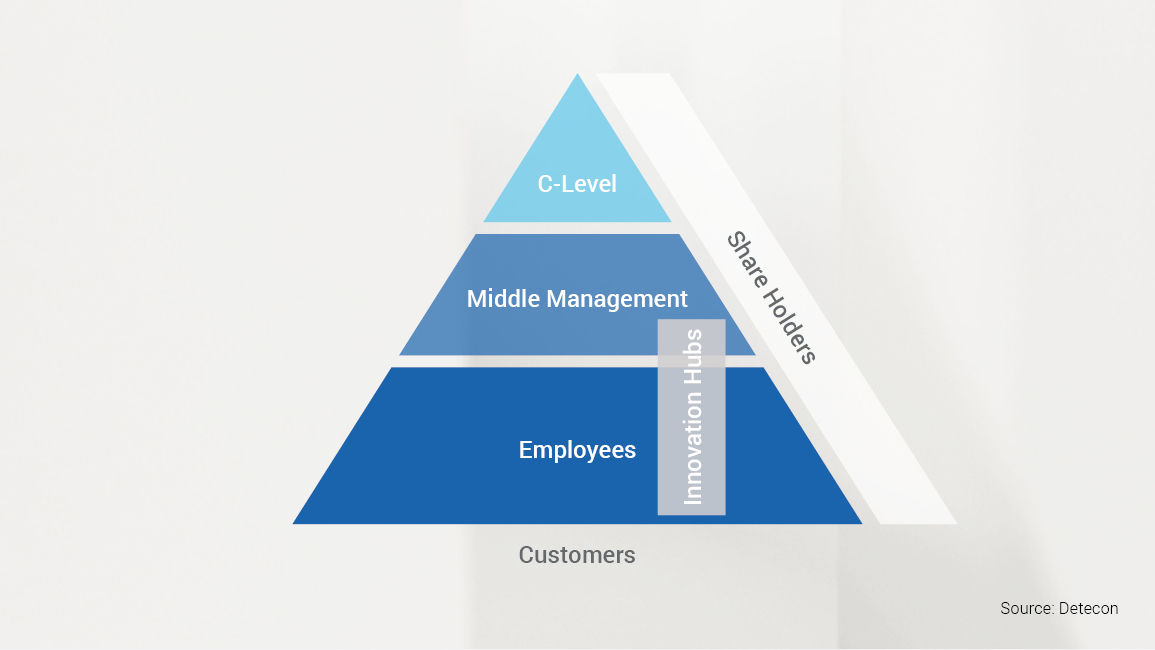Speaking with the clients, I often hear, that digitization is primary about technology facing customers, changes in processes, becoming data-driven etc. It’s absolutely true, that those areas are important for success and Digital Maturity Model, that Detecon International developed together with TMForum addresses these challenges, but …! If you ask me, what is the main of the 6 DMM areas, I would for sure select “Organization & Culture”. Why? For a simple explanation I would use the famous quote “Culture eats strategy for breakfast” from legendary management consultant and writer Peter Drucker.
It is pretty simple. Let’s take an example with a car: You can make driving license. Buy a nice car. Prepare the route for your drive beforehand. Make sure, that you have enough of gas. But if you will not drive the car properly, if you will misbehave, the police will stop you after second corner or you will even crash the car and not come to the end. Organization and culture equals by to the driver and it’s behavior, skill and willingness to move forward.

Stakeholders, motivation, culture
Every senior consultant, facing an organization, which is going into digitization, has to realize quickly, what the motivation is and who the main stakeholders in this process are. It is not surprise that the motives and key players differ. According to it, the advice for a successful transformation journey needs to be adjusted. There is no “one size fits all” concept.
Major stakeholders pushing digitization can be:
- Top management
- Innovation hotspots/hub(s) in the organization
- Employee initiatives
- Middle management
- Share holders
- Customers
You may imagine that without having the whole organization engaged with the process, none of the stakeholders has the power to push it through successfully.

Skills, Talents, Tools
We have seen many examples of companies, where management decided to go for digital change, but didn’t enable employees to update their skills even the necessary tools and working environment was created. The result was usually mistrust in the transformation process. Sometimes followed by passive resistance, sometimes even causing open fight against it.
On the other hand, developing the people talents without providing them with necessary working conditions may also lead to a failure. This situation is getting crucial in the Covid times, where with the necessary rise of home office many organization realized, that they were missing digital collaboration tools. However, to fix the tool gap and digital tool strategy is necessary, so your employees are not forced to use seven different systems.
Changing culture and company values is a time consuming continuous process. It needs to be carefully observed and if one step is missed of failed, the organization shouldn’t move forward without completing it.
No matter if, the digitization was motivated by new technology giving new opportunities, competitors being ahead you, business partners demanding digital interfacing or even if it was pushed by regulation, internal buy in to the transformation is essential.
Fear cannot replace the vision
In a short term, fear from competition can work as motivation for the organization. People stick together and move forwards to fight the common enemy. Nevertheless, this kind of negative motivation turns into ineffective in long term. It creates stress and not healthy organizational environment.
It is the role of top management to create clear and positive vision for digital transformation, communicate it to the organization and make sure, that it is accepted and lived. If it fails, than the “Culture eats digitization strategy for breakfast”.
The article was originally published on 08.12.2020 on LinkedIn.







